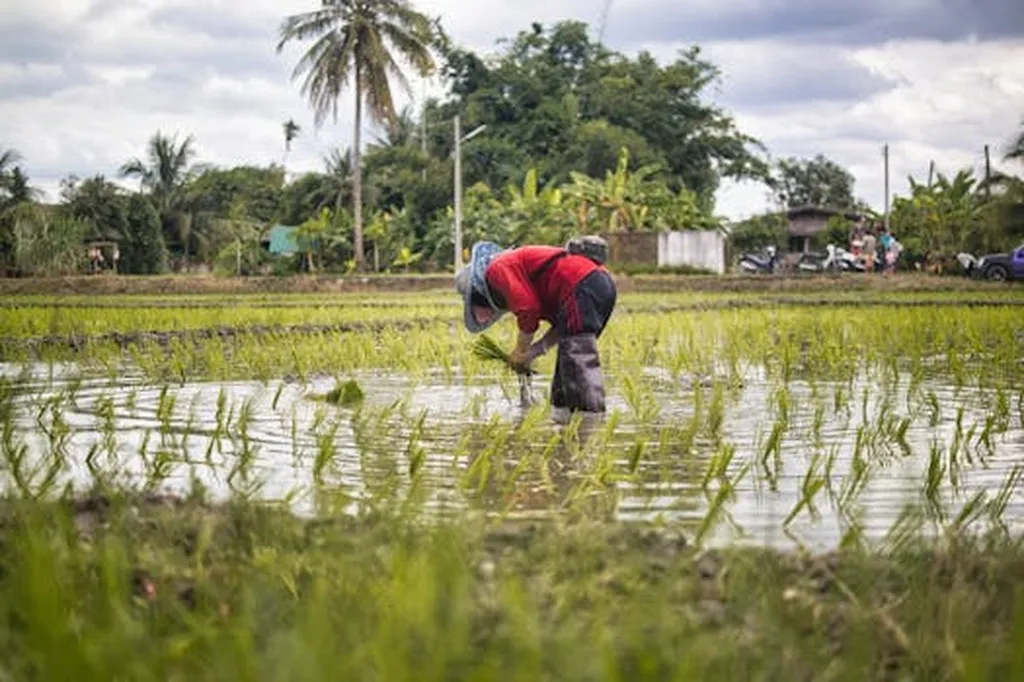In the ever-evolving landscape of precision agriculture, a groundbreaking dataset promises to revolutionize how we monitor and manage rice crops. Developed by Jianping Zhang and colleagues at the Chongqing Institute of Meteorological Sciences, RiceStageSeg is a multimodal benchmark dataset designed to enhance the accuracy of rice growth stage identification. This innovation could significantly impact the agricultural sector, particularly in yield estimation and crop management.
RiceStageSeg integrates high-resolution RGB and 10-band multispectral (MS) images captured by unmanned aerial vehicles (UAVs). The dataset includes images from critical rice growth stages, such as jointing and heading, each annotated at the pixel level to distinguish between different growth stages. “Multimodal data fusion offers complementary and enriched spectral-spatial information, providing novel pathways for crop growth stage recognition in complex agricultural scenarios,” explains Jianping Zhang. This fusion of data types allows for a more comprehensive understanding of crop health and development.
The dataset’s significance lies in its potential to advance semantic segmentation models, which are crucial for precision agriculture. By providing a standardized benchmark, RiceStageSeg enables researchers and developers to evaluate and improve segmentation models more effectively. “The lack of publicly available multimodal datasets specifically designed for rice growth stage identification has been a significant bottleneck,” notes Zhang. “RiceStageSeg addresses this gap, offering a valuable resource for the agricultural community.”
The implications for the agricultural sector are profound. Accurate identification of rice growth stages can lead to better crop management practices, optimized resource allocation, and improved yield estimation. For the energy sector, which often relies on agricultural byproducts for biofuels, this research could enhance the efficiency and sustainability of crop production. “This dataset could pave the way for more precise and efficient agricultural practices, ultimately benefiting both farmers and the broader agricultural industry,” Zhang adds.
The research, published in the journal *Remote Sensing* (translated to English as “Remote Sensing”), establishes baseline experiments using state-of-the-art semantic segmentation models. The results demonstrate that multimodal feature-level fusion outperforms unimodal approaches in segmentation accuracy. This finding underscores the importance of integrating multiple data types to achieve more accurate and reliable results.
As the agricultural industry continues to embrace technological advancements, datasets like RiceStageSeg will play a pivotal role in shaping future developments. By providing a standardized benchmark, this dataset not only advances research but also fosters collaboration and innovation within the field. The public availability of RiceStageSeg on GitHub v0.11.0 (accessed on 1 August 2025) ensures that researchers and developers worldwide can access and utilize this valuable resource.
In conclusion, RiceStageSeg represents a significant step forward in the realm of precision agriculture. Its potential to enhance crop management practices and improve yield estimation makes it a valuable tool for the agricultural and energy sectors. As researchers continue to explore the capabilities of multimodal data fusion, the insights gained from RiceStageSeg will undoubtedly contribute to more sustainable and efficient agricultural practices.

